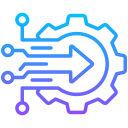Lead the People Side of Change
Use empathy interviews and change impact assessments to understand fears, incentives, and daily workflows. A logistics company co‑designed dashboards with dispatchers, preserving trusted cues while simplifying screens, which turned skeptics into advocates before the first go‑live date.
Lead the People Side of Change
Offer role‑based learning—leaders, product owners, engineers, analysts—with hands‑on labs and coaching circles. A city administration hosted weekly lunch‑and‑learns, pairing experts with peers, and saw adoption soar as employees connected new tools to real cases they handled daily.
Lead the People Side of Change
Create psychological safety for experimentation, run blameless postmortems, and spotlight small wins. Replace big‑bang reveals with frequent demos. Share your favorite team ritual for learning quickly; we’ll compile community practices that make continuous improvement feel rewarding and sustainable.






